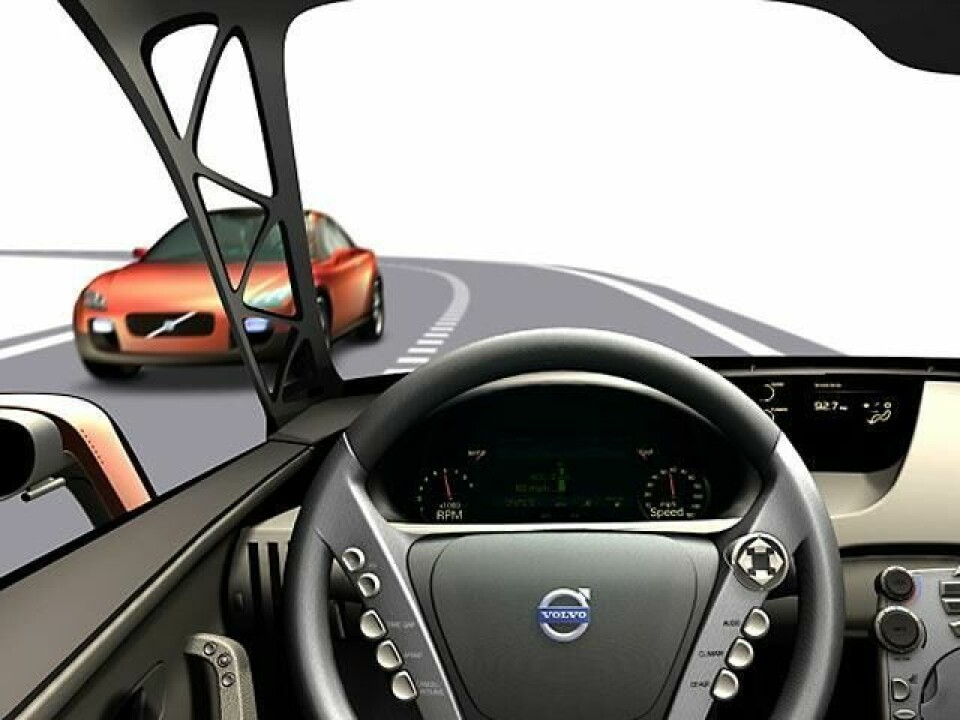
Volvo SCC concept takes safety into a new dimension
Dec 8, 2000 - The Volvo Safety Concept Car (SCC) makes its world debut at the Detroit Motor Show in January 2001.


Dec 8, 2000 - The Volvo Safety Concept Car (SCC) makes its world debut at the Detroit Motor Show in January 2001. The SCC focuses on active safety and on features that will help all motorists become safer drivers, such as a see-through A-pillar, rather than merely adding new airbags and further developed crumple zones. It also demonstrates that Volvo is at the cutting edge of advanced technology in the interests of safer driving.
“A main ambition with the Safety Concept Car was to create ‘superior vision’. Another ambition was to implement modern technology in order to support the driver and make driving safer. This was achieved by combining traditional engineering with advanced electronics and design,” explains Hans Gustavsson, Head of Research, Product Development and Purchasing at Volvo Cars.
Better visibility
The SCC tackles the problem created by conventional A- and B-pillars of obstructed visibility at an angle to the front and across the shoulder to the rear. Volvo’s solution enables the driver to see through the A-pillars, thanks to a framework structure made of a combination of metal and plexiglass. The B-pillar curves inwards and follows the shape of the seat frame to provide better visibility to the rear. The SCC has a sensor that automatically catches the drivers’ eyes and adjusts the seat to put the eyes in the position which offers best view for both road and dashboard instruments.
“Drivers receive more than 90 per cent of the most critical information from outside the vehicle. If we can enhance the quality of this visual information, we can also give drivers a better chance of avoiding collisions. This is a top priority area in the Volvo SCC,” says Hans Gustavsson.
4-point safety belt
Volvo pioneered seatbelts in cars, and the SCC features two kinds of four-point belt integrated in the seat frame: the CrissCross Belt (X4) and the Centre Buckle Belt (V4). The CrissCross Belt is a conventional three-point belt supplemented with an extending diagonal chest belt from the shoulder to the hip. The Centre Buckle Belt is similar to the type of safety belt previously used in rally and racing cars.
Two-way communication
The car and its remote control communicate with each other automatically, with and without the driver being involved and enhances both the safety and security aspects of the car. This system is called the Volvo Personal Communicator (VPC) and includes a heartbeat sensor which registers heartbeats inside the parked car. This sensor informs the driver if someone has broken into the car and is hiding there – or acts as a reminder if a child or animal has been left in the car.
Collaboration
The Volvo Car Corporation leads the development of car safety within the entire Ford Motor Company, which has chosen to locate its Centre of Excellence for Safety at Volvo Cars headquarters in Gothenburg, Sweden. A number of the group’s research and development safety projects have been gathered together in the SCC which has been designed at the Volvo Monitoring and Concept Centre in California.
Full details of the Volvo Safety Concept Car will be available at the official world premiere on the first press day at the Detroit Motor Show on 8 January 2001. At the same press conference a second concept car, called ACC, will be unveiled.



